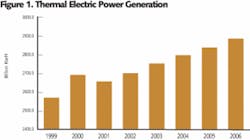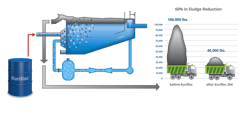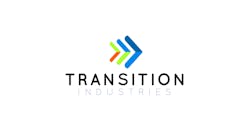Not Just Flipping a Switch: Water & Wastewater Management in the U.S. Power Generation Industry
Power plants are designed to operate using coal or either natural gas or a fuel oil/water mixture to fire combustion turbines. When operating with a fuel oil/water mix, most plants use millions of gallons of water, much of it drawn from nearby wells and local water supplies - or seawater desalination is also employed - for steam boilers and cooling water purposes. Coal is among the least expensive and most abundant fuels, and U.S. coal-fired generation accounts for over half the electricity generated in the United States. Although much less environmentally friendly and efficient than gas-fired turbines, coal’s abundance makes it a widely accepted fuel and a highly economical source of electricity. While making significant inroads as a competing source of electricity generation, gas turbines face a competitive hurdle with the continuing strength of coal usage.
A recent estimate from the U.S. Geological Survey (USGS) indicates that 346 billion gallons of freshwater was used in the United States in 2000. An ideal example for reducing that would be the thermoelectric power generation market, which had a high withdrawal percentage of 39% - or almost 136 billion gallons per day. For cooling purposes alone about 25 gallons of water is used for each kilowatt of thermoelectric power generated. As such, there’s a strong link between freshwater usage and electricity generated.
Figure 1 illustrates U.S. thermoelectric power generation for 1996-2006.
Water Demands
Bear in mind, water and wastewater management in the power generation industry is a vast subject. A variety of treatment processes may be employed. Some of the most prominent treatment processes include:
• Raw water pretreatment
• Boiler feedwater treatment
• Cooling tower make-up water
• Ash water recycling
• Wastewater Treatment
• Condensate Treatment
Treatment processes employed for water treatment predominantly depend on the source of water intake and could be any or a combination of activated carbon filtration, demineralization, thermal desalination and membrane desalination. Raw water pretreatment is similar to the treatment processes employed for drinking water treatment.
In thermoelectric plants, demand for cooling water comes from the condensing steam. Cooling towers are by and large once-through, recirculating wet towers or dry cooling towers. Each cooling system has different cooling water requirements.
Condensate polishing steam has to be treated for cooling water intrusion from the condenser and condensate returns. The steam normally contains dissolved minerals and suspended matter. Mixed-bed polishing is normally employed. Ion exchange systems provide high purity feedwater for applications such as the high-pressure high temperature boilers of modern power plants and refineries. Boiler and cooling tower scaling is very expensive to control.
Technology Segments
The ion exchange equipment market is highly fragmented with over 14 market participants. The majority of these companies service specific niche markets for a wide range of industrial applications or drinking water remediation. Some leading names include Aquatech, Calgon Carbon, Siemens/USFilter Corp., Christ Water Technology, Ecodyne, GE Water & Process Technologies, Graver Technologies, Infilco Degremont, Ionics, Kinetico, Purolite, and Severn Trent Services, etc.
Membrane separation often is employed in power plants if the boiler feed is from the sea for desalination. An interesting observation is that, generally, all the top companies in this market are U.S.-based. The company with the largest market share is Ionics Inc., which has been involved in desalination for many years now and was recently acquired by GE. The company largely offers RO and EDI as its principal plant offerings, although it has also built a handful of plants utilizing ED and VC technologies. It’s also able to build plants for most water salinities and end-user requirements. Other key participants in this segment include Membrane Systems Corp., Siemens/USFilter, and GE Osmonics. Each of these companies built a number of plants over this period and are well-established names in water and wastewater treatment for the U.S. power generation industry.
Membrane technologies dominate the market and many of the companies presently source their membranes from established manufacturers. The main membranes being used in these systems have been supplied by companies such as Dow FilmTec, DuPont, Hydranautics, Ionics, Koch Membrane Systems, and Osmonics. DuPont, however, has now exited the desalination membrane business.
The main consultants active in the market include AEPI/RosTek, Black & Veatch, Boyle Engineering Corp, Camp Dresser & McKee (CDM) Inc., Compton Corp, Duke/Fluor Daniel, Kimley-Horn & Associates, Montgomery Watson Harza (MWH), and Parsons Corp.
Shared Reuse
A noteworthy example in the water reuse domain for power generation is in Tampa Bay. The Florida city hosts the biggest seawater desalination plant ever to be built in the United States. It’s being constructed at Tampa Electric Company’s Big Bend Power Station site in southern Hillsborough County and will use cooling water from the power plant as its raw material. The desalination works use a semi-permeable membrane system to process the water with an RO process, after the water is put through a series of mechanical filters to remove solids. After going through the racks of RO membrane units, the water is treated with calcium carbonate to make it more suitable for drinking.
The plant is a key component of Tampa Bay Water’s Master Water Plan. To meet the region’s water needs, the water utility must tap into new sources of water other than groundwater. By 2003, the plan calls for the creation of 53 mgd of new water sources and a total of 111 mgd by 2008. The Tampa Bay Seawater Desalination Project output is anticipated to be 25 mgd, which could rise to 35 mgd in the future. The seawater desalination project is one piece of the water supply solution and should provide 10% of the region’s overall water supply by 2008.
Similar efforts are under way in California to provide for power generation and community water needs. In San Diego in late 2002, the board of directors representing 23 water districts approved the outline of a partnership with Poseidon Resources to build a $270 million desalination plant in Carlsbad, Calif. The facility, which is next to the Encina Power Station, is expected to produce up to 50 mgd of drinking water, enough for 100,000 households. The plant could begin producing water by 2007.
Conclusion
In summary, water & wastewater management has been a focus area for process turnkey contractors in the water industry - and will continue to be. In the last three years on average, power generation has increased at the rate of 45.1 billion kWh annually in the United States. This trend has resulted in continuous demand for water & wastewater management in this segment. IWW
About the Author: Sunitha Mysore Gopal is a senior industry analyst and program manager for the Frost & Sullivan’s Environmental Group. With a bachelor’s degree in environmental engineering and post-graduate work in management sciences, she has spent over 11 years analyzing markets for technologies, plants and services for the water and wastewater industry. For more information, contact Trisha Bradley: [email protected].


